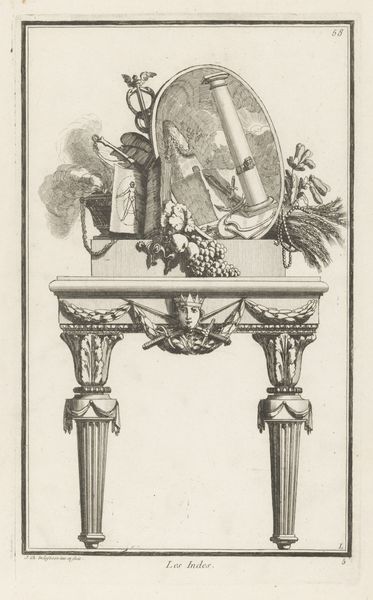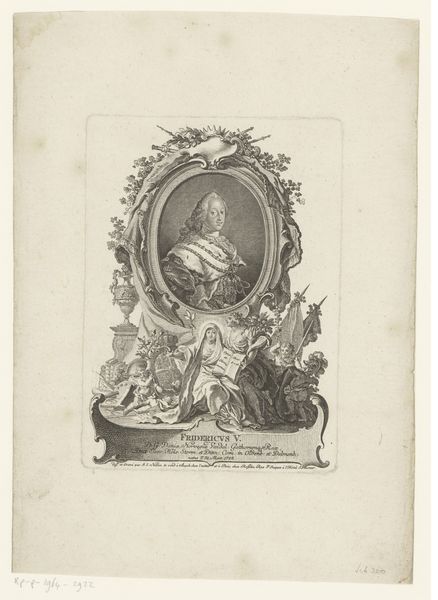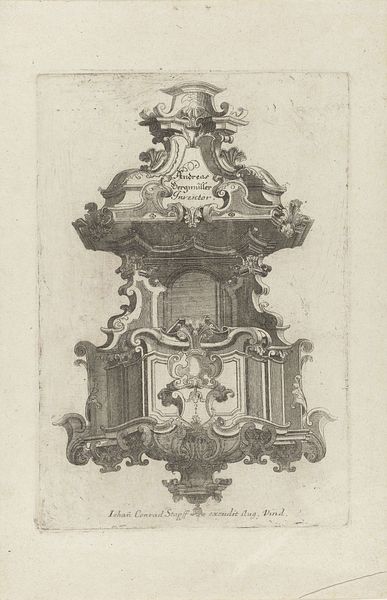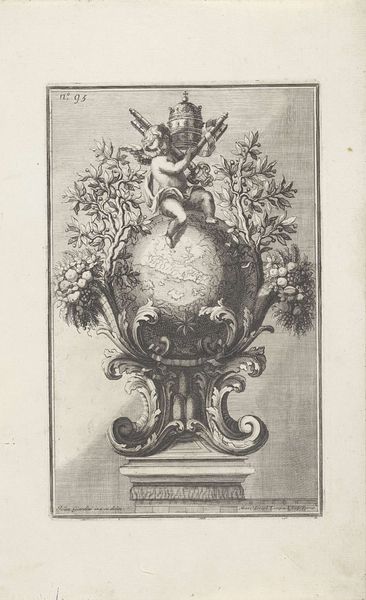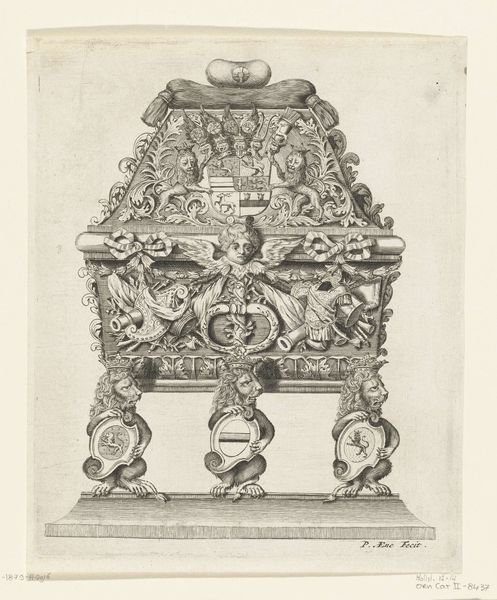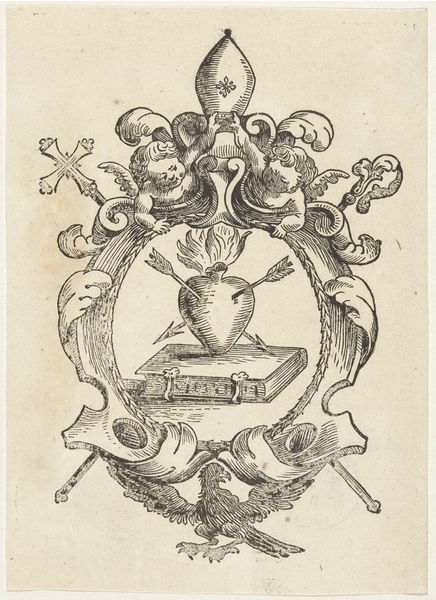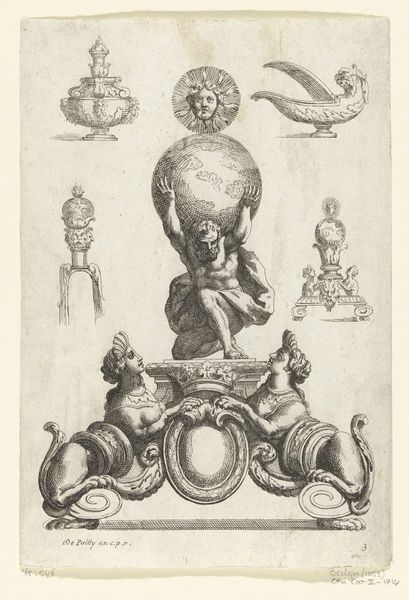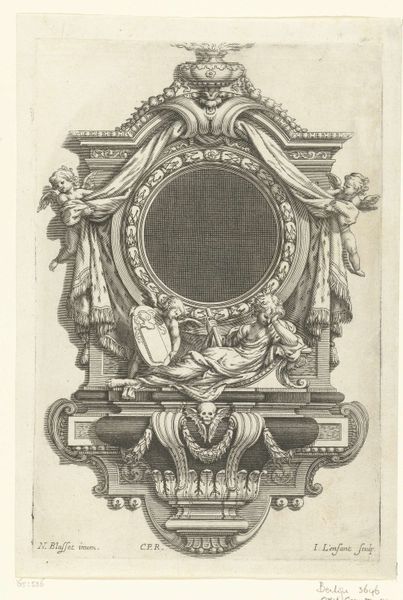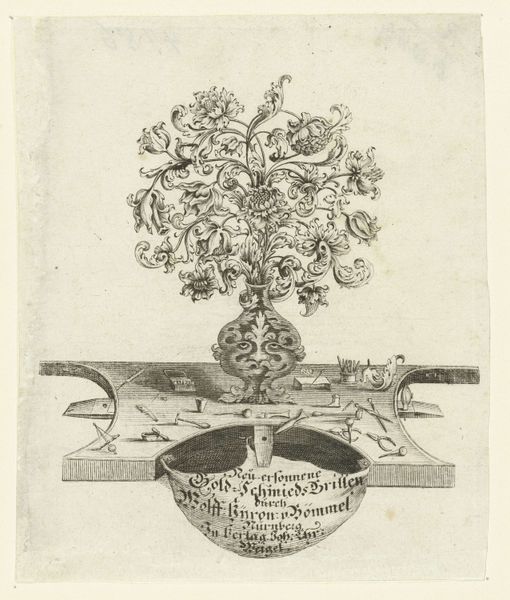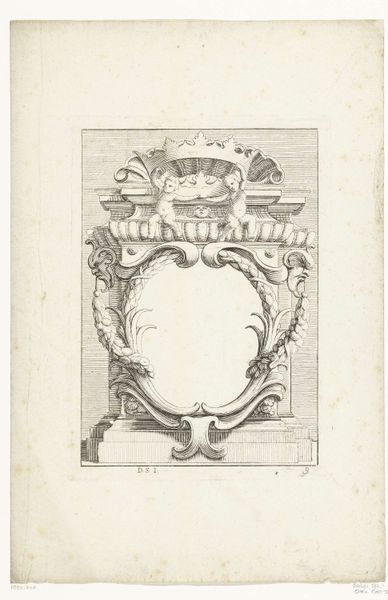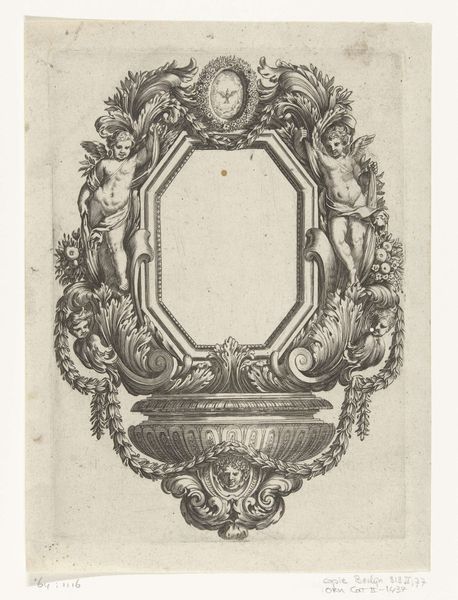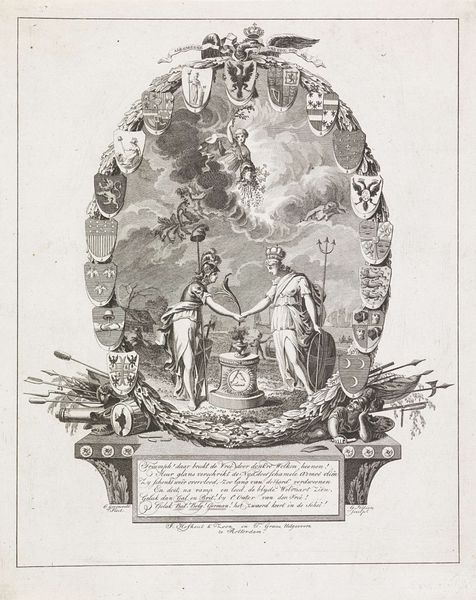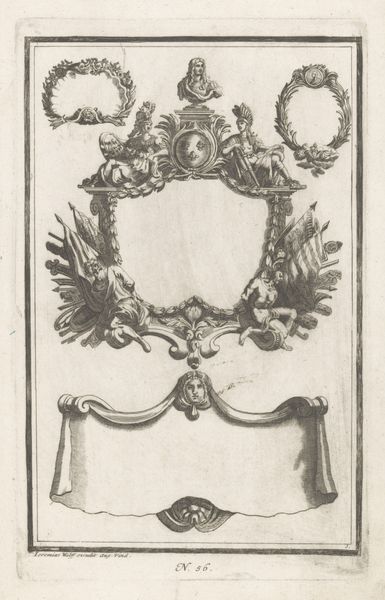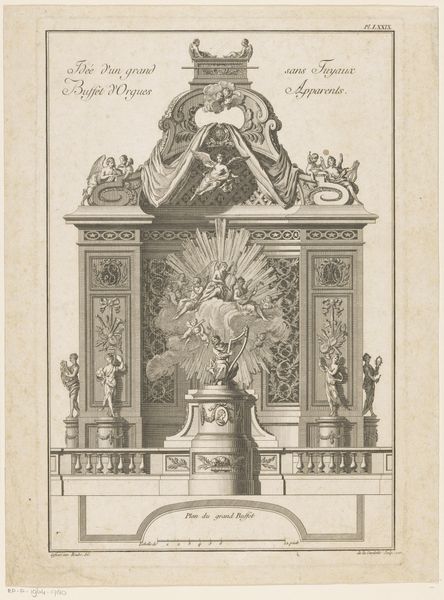
Dimensions: height 218 mm, width 143 mm
Copyright: Rijks Museum: Open Domain
Editor: This is "Embleem voor een Rotterdams kunstgenootschap," or "Emblem for a Rotterdam Art Society," dating sometime between 1745 and 1808, by Gerard van Nijmegen. It looks like an engraving, full of little details. What strikes me is how symmetrical it is, but with enough asymmetry to keep it interesting. What do you see in this piece, from a formalist perspective? Curator: The initial visual impact arises from the meticulous lines and calculated arrangement. Note the strategic use of curvilinear forms set against geometric elements. The composition balances decorative embellishments—garlands, tools of artistry—against the stoic circular frame. The success of the artwork lies in the strategic distribution of mass and space. Tell me, what purpose do you think is served by that blank oval in the center? Editor: Hmm, perhaps it's intended to hold a specific image, or maybe even text related to the Art Society itself? Is that asymmetry created just to add character, or does it convey more? Curator: Precisely. It offers a space for meaning to be inscribed later, an aperture awaiting content. The asymmetry avoids simple mirroring. The artist plays with our expectations, subtly disrupting the formal rigidity. Think of how the composition uses dynamic tension between stillness and movement, order and slight disarray, leading the viewer's eye around. Editor: So, the lines aren’t just decorative; they construct relationships between objects and imply motion. Curator: Exactly. The artist's mastery in the handling of the linear structure is evident in creating these intricate yet cohesive relations. It exemplifies the formal principles underlying visual language of 18th-century emblems, in which these devices are employed to establish value. It also brings into focus that even now the core principles remain to drive our interpretations. Editor: I never would have thought of it that way! It seems my analysis has more to learn about art and its composition, like yours. Curator: And I may look deeper into other points of view than my own! Art, as always, challenges our way of thinking.
Comments
No comments
Be the first to comment and join the conversation on the ultimate creative platform.
